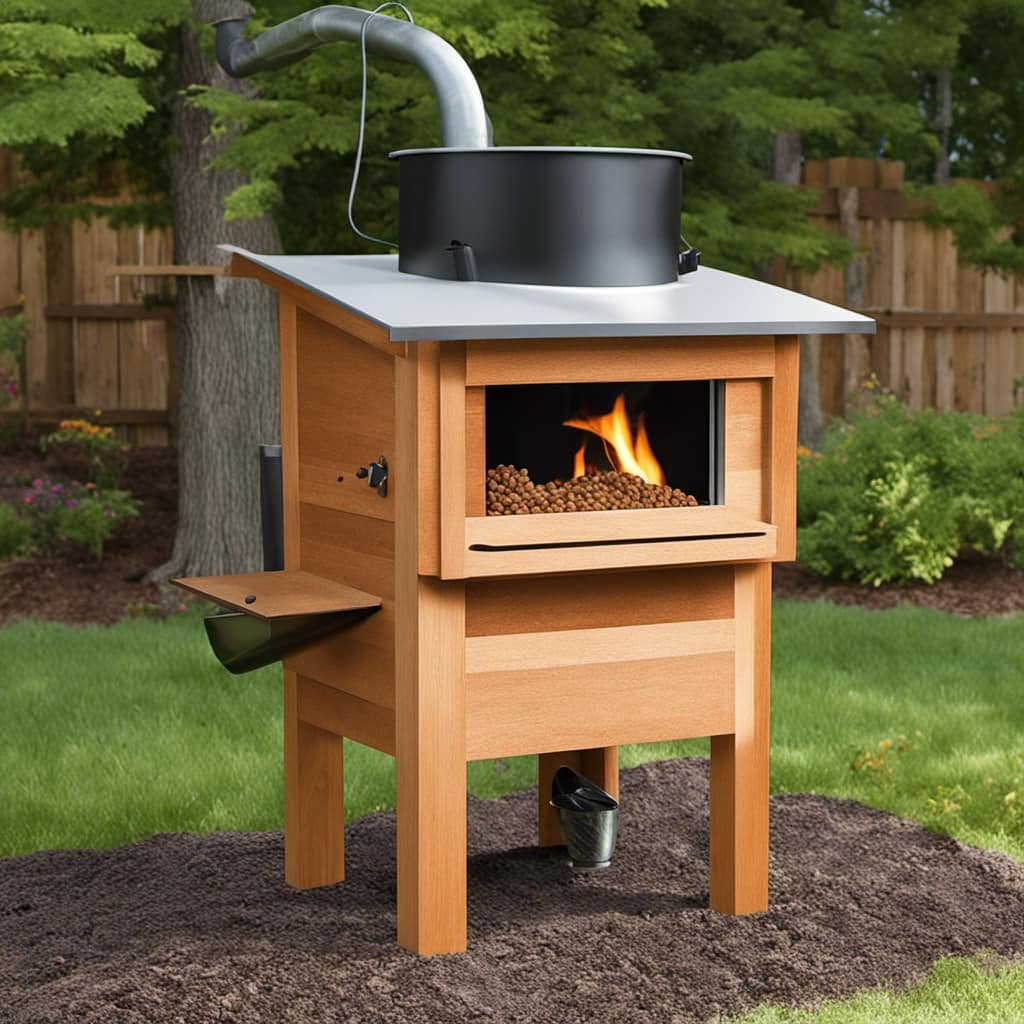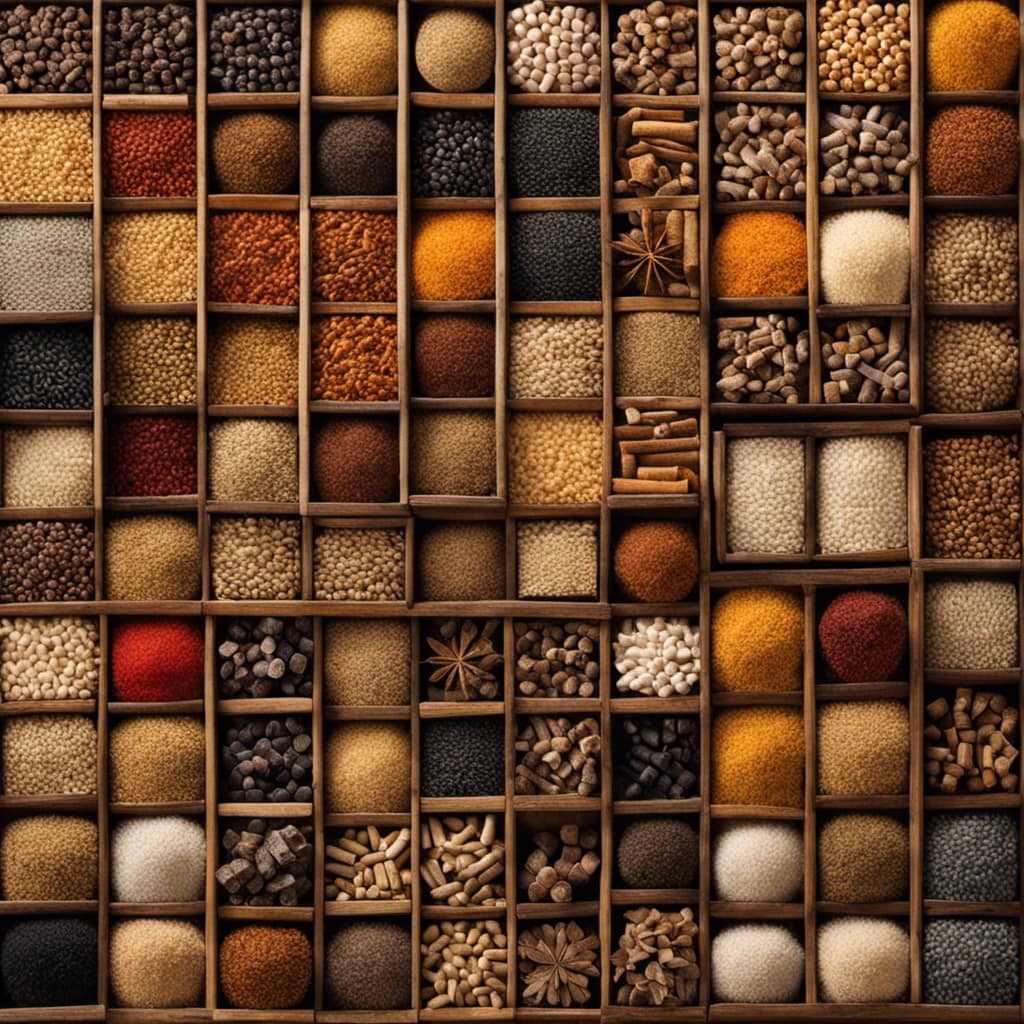Howdy, everyone! Have you ever thought about the best way to deal with rust on your favorite cast iron wood stove? Don’t worry anymore, because I have the perfect solution for you.
In this article, I’m going to share my tried-and-true methods for removing rust and keeping your wood stove looking as good as new. With a little know-how and some handy tools, you’ll be able to say goodbye to that unsightly rust and hello to cozy nights by the fire.
Let’s jump right in, shall we?
Key Takeaways
- Moisture is a main cause of rust on wood stoves.
- Proper maintenance and regular cleaning can help prevent rust formation.
- Wire brush, rust remover, sandpaper, and high-temperature paint are essential tools for rust removal.
- Applying a thin coat of vegetable oil after each use can create a protective barrier against moisture and prevent rust.
Understanding the Causes of Rust on Cast Iron Wood Stoves
As I research the causes of rust on cast iron wood stoves, I realize that understanding the factors involved is crucial for preventing future corrosion. One of the main causes of corrosion on wood stoves is moisture. When water comes into contact with the cast iron surface, it reacts with the metal and forms rust. This can be exacerbated by high humidity levels or exposure to rain and snow.

Additionally, improper maintenance and neglect can lead to rust formation. If the stove isn’t regularly cleaned and protected with a protective coating, it becomes vulnerable to rust.
The effects of rust on wood stoves can be detrimental. It weakens the structure of the stove, leading to potential leaks and damage to the internal components. Rust can also affect the efficiency of the stove, reducing its heating capabilities.
To prevent rust, it’s important to keep the stove dry and clean, and to regularly inspect and maintain it.
Essential Tools and Materials for Rust Removal
I need to gather some tools and materials, like a wire brush and rust remover, in order to effectively remove the rust from my cast iron wood stove. Rust can be a common issue with cast iron, but with the right tools and techniques, it can be easily prevented and removed.

Here are some essential tools and materials you’ll need:
- Wire brush: A wire brush is perfect for scrubbing away loose rust and dirt from the surface of the cast iron stove.
- Rust remover: There are various rust removers available, such as vinegar or commercial rust removers, that can effectively dissolve and remove rust.
- Sandpaper: Sandpaper can be used to smooth out any rough patches after rust removal.
- Protective gloves: It’s important to protect your hands while working with rust remover and other chemicals.
- High-temperature paint: Once the rust is removed, applying a high-temperature paint can help prevent future rusting.
When removing rust from cast iron, it’s important to avoid some common mistakes. One mistake is using a wire brush with too much force, which can damage the cast iron surface. Another mistake isn’t properly drying the cast iron after rust removal, as moisture can lead to future rust formation. Lastly, using the wrong type of paint can cause the paint to peel and further damage the cast iron.
Step-By-Step Guide to Removing Rust From a Cast Iron Wood Stove
To remove rust from my cast iron wood stove, I’ll need to follow a step-by-step guide that includes using a wire brush and rust remover. First, I’ll start by cleaning the stove thoroughly to remove any loose debris. Then, using a wire brush, I’ll gently scrub off the rust in circular motions. For stubborn rust spots, I’ll apply a rust remover and let it sit for a few minutes before scrubbing again. Here is a table that outlines the rust removal techniques and recommended cleaning products:
| Rust Removal Technique | Recommended Cleaning Product |
|---|---|
| Wire brushing | Stiff wire brush |
| Rust remover | Vinegar or lemon juice |
Preventing Rust and Maintaining the Beauty of Your Cast Iron Wood Stove
One effective way to prevent rust and maintain the beauty of my cast iron wood stove is by applying a thin coat of vegetable oil after each use. This simple step creates a protective barrier that prevents moisture from coming into contact with the metal, thereby reducing the risk of rust formation.

In addition to this technique, here are some other cleaning techniques that can help keep your cast iron wood stove in excellent condition:
- Regularly remove any ashes and debris from the stove to prevent buildup and potential rusting.
- Clean the stove’s exterior with a mixture of warm water and mild soap, using a soft cloth or sponge.
- Avoid using abrasive cleaners or scrub brushes that can damage the surface of the stove.
- Dry the stove thoroughly after cleaning to prevent any moisture from lingering on the metal.
- Consider using a cast iron conditioner or specialized stove polish to further protect the surface and enhance its appearance.
Pro Tips and Tricks for Restoring and Preserving Cast Iron Wood Stoves
As I researched pro tips and tricks for restoring and preserving cast iron wood stoves, I discovered that using a vinegar and water solution can be highly effective in removing rust and stains from the surface. This simple yet powerful cleaning method is a go-to for many stove enthusiasts. To give you a clear idea of how to use this technique, I have created a table outlining the step-by-step process.
| Step | Instructions |
|---|---|
| 1 | Mix equal parts vinegar and water in a spray bottle |
| 2 | Spray the solution onto the rusted areas |
| 3 | Let it sit for about 15 minutes |
| 4 | Scrub the surface with a non-abrasive brush or sponge |
| 5 | Rinse with clean water and dry thoroughly |
| 6 | Apply a thin layer of oil to prevent future rusting |
Frequently Asked Questions
Can I Use Regular Household Cleaning Products to Remove Rust From My Cast Iron Wood Stove?
Yes, vinegar can be used to remove rust from a cast iron wood stove. It is an effective natural cleaner. Sandpaper can also be used, with a grit of around 120 to start.
Is It Necessary to Remove All of the Rust From the Wood Stove, or Can I Leave Some Behind?
I personally found that leaving some rust behind on my cast iron wood stove didn’t affect its performance. However, if you prefer a clean look, there are alternatives for rust removal.

Will Removing the Rust From My Cast Iron Wood Stove Affect Its Performance or Efficiency?
Removing rust from my cast iron wood stove does not affect its performance or efficiency. However, leaving rust can impact the stove’s lifespan and hinder heat distribution. Regular maintenance ensures optimal functionality and longevity.
How Often Should I Inspect and Clean My Cast Iron Wood Stove to Prevent Rust?
To prevent rust on a cast iron wood stove, I inspect and clean it regularly. I recommend checking for rust every few months and cleaning it at least once a year to keep it in good condition.
Are There Any Specific Types of Paint or Coatings That I Should Use to Protect My Cast Iron Wood Stove From Rust in the Future?
I’ve found that using high-temperature paint or stove polish can protect my cast iron wood stove from rust. Regular cleaning and maintenance are also key to preventing rust and keeping it looking great.
Conclusion
In the journey of restoring and preserving a cast iron wood stove, we’ve discovered the secrets to removing rust and maintaining its timeless beauty.

Like a phoenix rising from the ashes, our stove has been transformed into a symbol of warmth, comfort, and durability.
With the right tools, materials, and a little bit of love, you too can revive your cast iron wood stove and create lasting memories around its cozy fire.
Embrace the magic of restoration and let your stove’s story unfold.
Growing up surrounded by the vast beauty of nature, Sierra was always drawn to the call of the wild. While others sought the comfort of the familiar, she ventured out, embracing the unpredictable and finding stories in the heartbeat of nature.
At the epicenter of every remarkable venture lies a dynamic team—a fusion of diverse talents, visions, and passions. The essence of Best Small Wood Stoves is crafted and refined by such a trio: Sierra, Logan, and Terra. Their collective expertise has transformed the platform into a leading authority on small wood stoves, radiating warmth and knowledge in equal measure.











